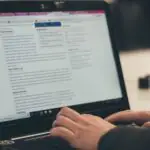
How to Check Unfamiliar Terms in Different English Dialects
Even for fluent speakers, English is not the easiest language to master. English has a rich history, and because of that, many English dialects exist that can differ in spelling, punctuation, and vocabulary.
As proofreaders and editors, having an opportunity to work with people from anywhere in the world is great, but it means we may come across words and spellings with which we’re unfamiliar. We need to be able to recognize the different dialects and understand whether we’re using them correctly.
This post will show you how to recognize the most common English dialects and will recommend some available tools for checking unfamiliar terms.
Check Your Proofing Language
The first thing you need to do before you begin work on a document is make sure you’ve set the right proofing language in your word processor. Doing so will help the software flag dialect inconsistencies in the text.
Many English dialects exist, each with their own distinct rules. Here are some of the most common ones:
- American (US)
- British (UK)
- Canadian
- Australian
- New Zealand
- South African
- Irish
- Indian
Many people are familiar with the US and UK dialects, and knowing these is a great start because they influence many of the other dialects. But you need to be aware that the various dialects have their own features.
Learn Some Common Rules
Knowing the common spelling differences between English dialects is helpful. That way, you’ll be able to recognize errors quickly.
For example, US spelling favors the endings or, er, og, ize, yze, ed, and able, yet many of the corresponding UK spellings end in our, re, ogue, ise, yse, t, and eable.
While memorizing these spelling rules can be helpful for recognizing possible differences in dialect, if you’re still not sure about certain words, other tools are available.
Try an Internet Search
English is the most commonly used language on the internet. It may sound too easy, but sometimes a simple search is all you need to discover whether a word or phrase is correct in your desired dialect. Type the term and see what comes up. Often, a definition will appear that specifies which English dialect the word is from.
If that doesn’t work, you can try getting a little more specific. Type the term again along with the specific dialect you want to check. For example, if you search “lorry US English,” the first result that would likely come up is “truck.”
Use Online Dictionaries
When you’re doing the kind of internet search mentioned above, the first result you see will often be from a dictionary. These are great resources for checking unfamiliar words.
While some people may prefer to flip through the pages of a dictionary on their bookshelf, using online versions can be a lot simpler. But make sure to use reputable sources so you get the most up-to-date information.
In the example above, if you typed “lorry” into Cambridge’s search, you would see “UK” in the result, appearing right after the “noun” designation, indicating that British English uses the word.
Use the Google Ngram Viewer
The Google Ngram Viewer is a very valuable tool. It lets you search for words and phrases and then provides information on how people have used them most commonly. One of its many features allows you to compare the uses and spellings of words across different English dialects. Learning how to use the Google Ngram Viewer isn’t hard, so if you’ve never used it, don’t be intimidated!
Check Your Style Guide
Style guides can be very important for proofreading and editing. Many types of style guides are available. If your client doesn’t have a preferred or required one, you can look at a regional style guide for the specific English dialect. Doing this will help you recognize unfamiliar words or spellings.
Ask for Clarification
Finally, if none of the methods above have given you clarity, don’t be afraid to ask for help. If you’re working with an English dialect you’re really unfamiliar with and a word has you totally stumped, communicating with your client for clarification is advisable.
If that’s not possible, try flagging the word with a comment. That way, your client will be confident in your abilities and won’t think that you simply let a potential mistake slide.
Becoming A Proofreader
If you use the tools and follow the steps outlined above, you should be able to recognize and understand almost any English word or phrase, regardless of dialect.
If you want to become a true master, our Becoming A Proofreader course covers British, Australian, and American English. Whether you’ve been proofreading and/or editing for years or you’re looking for an exciting new freelance career, check out our free trial today!



Leave a Comment
Your email address will not be published.